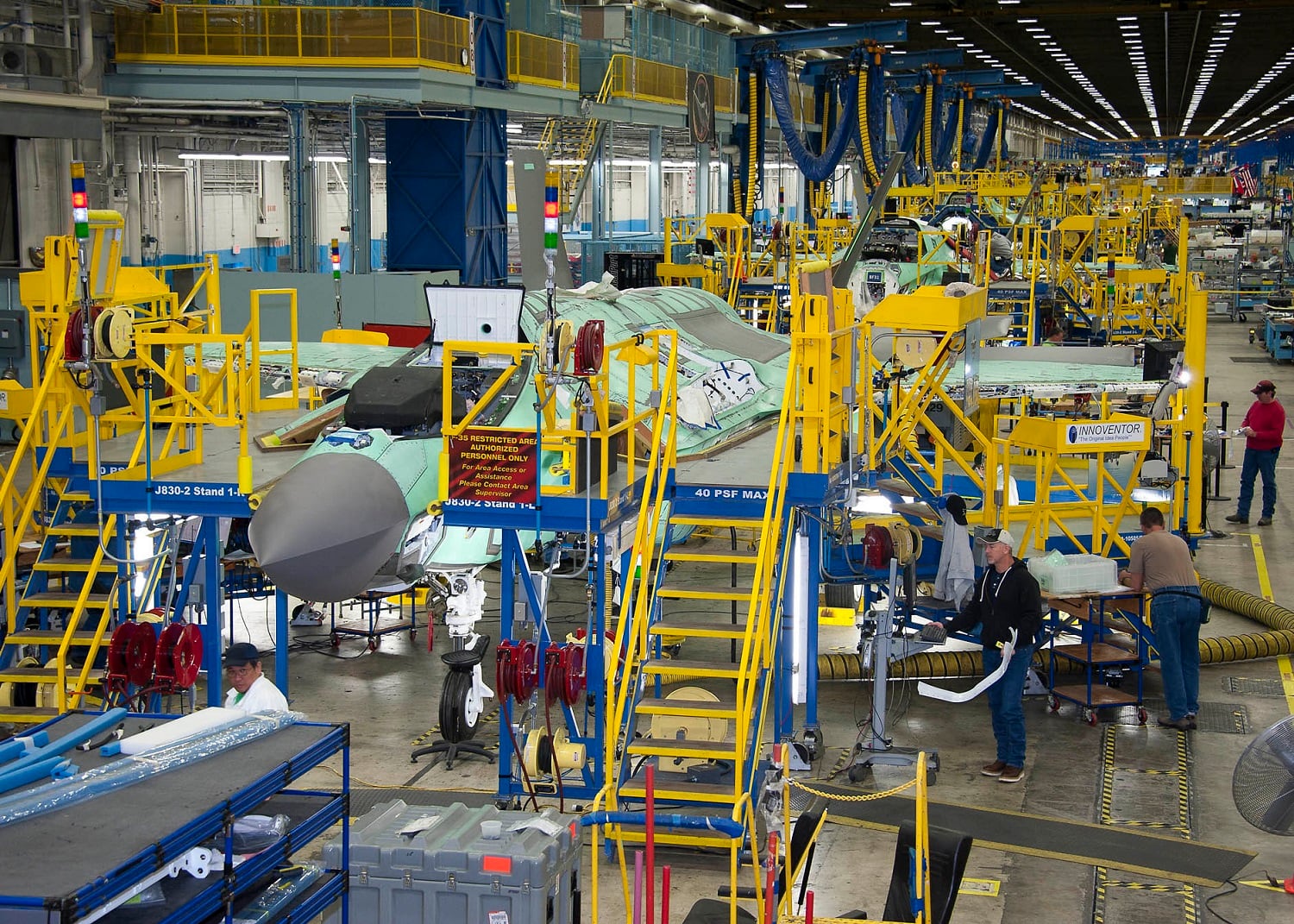WASHINGTON — When it comes to manufacturing major structural pieces of an aircraft, sometimes bigger is better.
At least that’s the philosophy of Arconic, a Pittsburgh-based supplier of aluminum, nickel and titanium parts to the commercial and defense industry. The company is responsible for manufacturing parts of the F-35 and its engine — including some classified components execs refuse to talk about — as well as the armor used on U.S. military ground vehicles like the Joint Light Tactical Vehicle.
What sets Arconic apart from its competitors is the strength of the alloys it produces — often using patented formulas — and its ability to take many components and manufacture them as a single piece, reducing weight and bulk, said Eric Roegner, president of Arconic Defense.
The company manufactures the F-35’s bulkheads in entirely one piece, using techniques Arconic developed for the inner rear spars on Airbus’ A380 airliner, which first flew in 2005.
“[At] that point, we had been talking to Lockheed, and they were a little skeptical, but when they saw the part flying on the A380, they came to the table,” Roegner said in a Sept. 21 interview.
Arconic forges the bulkheads in one piece out of aluminum or titanium using a 50,000-ton machine at its facility in Cleveland, Ohio. Only one such machine exists anywhere in the world, he said.
To make the 21 foot long, 7 foot tall bulkheads through a more traditional manufacturing process would require machining multiple large pieces of titanium or aluminum, fastening them together, and then putting additional forgings on it, he said. But by using a process called near-net forging — along with some technologies developed and patented by Arconic — the company can make the bulkheads in one piece and dramatically reduce the cost and weight of the component.
“Some of the bulkheads [initially] were composed of upwards of 100 different parts. We could make them in one piece. Just wham, you get your titanium forging or your aluminum forging,” he said. “This one application across six bulkheads took 400 pounds out, and it got the installed cost of the final part down 25 percent.”
Roegner said Arconic is working with Lockheed and Pratt & Whitney, which produces the joint strike fighter’s F135 engine, to find more structures that can be consolidated to a single piece but declined to give further details.
“I unfortunately can’t talk about them,” he said.
The transition of technology from the A380 to the F-35 is just one example of how Arconic’s commercial innovation ends up filtering into defense products. The company is able to sell the majority of its products to defense primes as commercial items, and overwhelmingly manufactures parts for defense applications in the same facilities where commercial products are produced.
That’s helped Arconic retain experienced employees and make investments in new manufacturing technologies or materials, even as defense budgets fluctuate, Roegner said.
“In the world of structures, whether that’s aero structures or ground vehicle structures, and even arguably in jet engines, the commercial world has pushed R&D and development much further and faster than the defense world,” he said.
“The defense world has been putting a lot of its R&D dollars on cyber, networks, stealth, other systems like that and less on the underlying material characteristics of the vehicles, whereas the commercial world has been pushing that very, very aggressively. And what we’ve found is that many technologies we’ve developed commercially we’ve been able to bring in [for] defense applications, and by doing that ... save a significant amount of cost while also driving significant performance improvement.”
RELATED

Like other companies, Arconic is keeping a close eye on innovations in additive manufacturing technologies, better known by the moniker of 3-D printing. This month, the company installed its first 3-D printed part on a production airplane: a titanium bracket for the Airbus A350.
“We’ve been able to communicate about what we’ve done commercially,” Roegner said. “We are in very active work with military OEMs and military applications, we just can’t talk about any of the specifics.”
While the Defense Department is interested in additive manufacturing, particularly downrange in operational scenarios where certain items might be harder to acquire, more work needs to be done by industry to certify 3-D printed parts and prove that they can stand up to the stresses of military use, he said.
Arconic is particularly active in further developing “hybrid” applications, where 3-D printing and traditional manufacturing techniques like forging are both used to make a qualified part. Roegner said this technique is attractive for both the commercial and defense aerospace markets that need qualified parts but want to reap the benefits of 3-D printing.
“We have developed a technology that we call Ampliforge, which uses printing — in this case we used wire-fed, high deposition rate systems — to print a preform that puts exactly the metal you need where you need it. And then you only have to do one final forging hit that locks in all of the properties and dimensions,” he said.
“So you do that in significantly less time, much less cost because you’re not wasting material. … And in terms of qualification, you get the added benefit that you’re not actually qualifying a printed part; you’re qualifying the finished forging.”
Valerie Insinna is Defense News' air warfare reporter. She previously worked the Navy/congressional beats for Defense Daily, which followed almost three years as a staff writer for National Defense Magazine. Prior to that, she worked as an editorial assistant for the Tokyo Shimbun’s Washington bureau.








